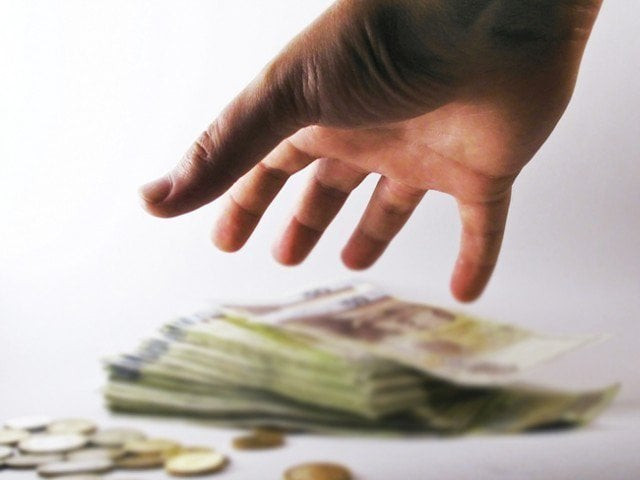
The interest rate differential between the rupee and the US dollar has increased substantially. Pakistan’s policy rate currently stands at 13.25%, which is 11.50 percentage points higher than the US policy rate of 1.75%.
Hence, Pakistan is also a recipient of these funds as we have received almost $1 billion worth of investments in short-term government instruments and the equity market.
Pakistan receives $1 billion in hot foreign money
This is because it is much more profitable to park funds in rupee-denominated government papers and stocks as compared to dollar-denominated government papers. Hence, overseas investors sent their dollars and converted them into rupee investments.
But is it good or bad? The question certainly deserves analysis of the merits and demerits of such flows. Furthermore, we can learn a lot from our recent global macroeconomic history in this regard.
Let’s discuss the merits of these flows first.
For a foreign currency-deprived country like Pakistan, which has oscillated between very high current account deficit years and moderately high current account deficit years (and has seldom seen any credible surplus), the inflows of around $1 billion appear to be a blessing, at least an apparent one.
It has taken some pressure off the country’s foreign currency reserves and has helped in stabilisation of the foreign currency market.
Furthermore, investment in the rupee, especially through the conversion of dollars, is also a dependable measure of restoring confidence in an economy which was facing an external account crisis a year ago.
But this is only the bright and obvious side of the story. Let’s dig deeper.
Research has shown that these hot money flows are fairly temporary and make economies extremely vulnerable to external factors beyond the control of policymakers. These funds have distinct degrees of reversibility and have caused destabilisation in countries like Brazil, Thailand, Taiwan, South Korea and Indonesia.
Some researchers have termed these flows highly speculative in nature. According to them, these flows create extreme instability in foreign exchange markets of host countries.
This means that these funds can fly out very quickly, creating selling pressure on local currencies and resulting in depreciation or devaluation.
These flows are not only a source of vulnerability but have contributed to the most vicious two financial crises of recent times – the global financial crisis of 2007-08 and the Asian financial crisis of 1997.
A review of relevant literature unveils the fact that emerging markets, which were apparently and directly away from investments in toxic assets which caused the global financial crisis, also experienced a decline in output and equity markets by the end of 2008.
Cross-country transmission of turmoil was through various channels and hot money flows or portfolio investments were a major source of capital flow reversal from the emerging markets.
Another problem with these flows is that these reversals are somehow immune from regulations and policy interventions. The emerging markets and countries, which faced the financial crisis, had tried their level best to control or curb the impact of reverse flight of capital from their foreign exchange markets. But most of these efforts remained unsuccessful.
The only successful policy intervention to control the capital flight was exhibited by Malaysia. But those policies were too austere to be repeated.
Positive signals rising from Pakistan’s economy
Another downside of these flows would be that Pakistan’s policymakers would be compelled to keep the interest rate high even after the economic stabilisation process ends. This would be a natural course as the country would not be willing to let go of the precious hot money which it would have accumulated by that time. Hence, this policy would always keep growth in check and high financial costs may become a dis-incentive for capital investment in the country.
Pakistan’s foreign exchange market had witnessed the vulnerability of such flows in the past. I clearly remember the day when selected shares of Pakistan stock market were included in the MSCI Emerging Market Index in 2016, the bourse witnessed a quick outflow of funds and as a result of capital flight from portfolio investments, the foreign exchange market experienced a mild panic.
Imagine if the investors behind the current hot money flows decide to pull out suddenly, does the foreign exchange market possess the depth to bear the additional outflow of millions of dollars in a short span of time?
The purpose of this article is not to paint a gloomy picture. The only intention is to weigh the pros and cons and make apparent what is not obvious to the naked eye.
The writer teaches economics
Published in The Express Tribune, December 2nd, 2019.
Like Business on Facebook, follow @TribuneBiz on Twitter to stay informed and join in the conversation.


















COMMENTS
Comments are moderated and generally will be posted if they are on-topic and not abusive.
For more information, please see our Comments FAQ